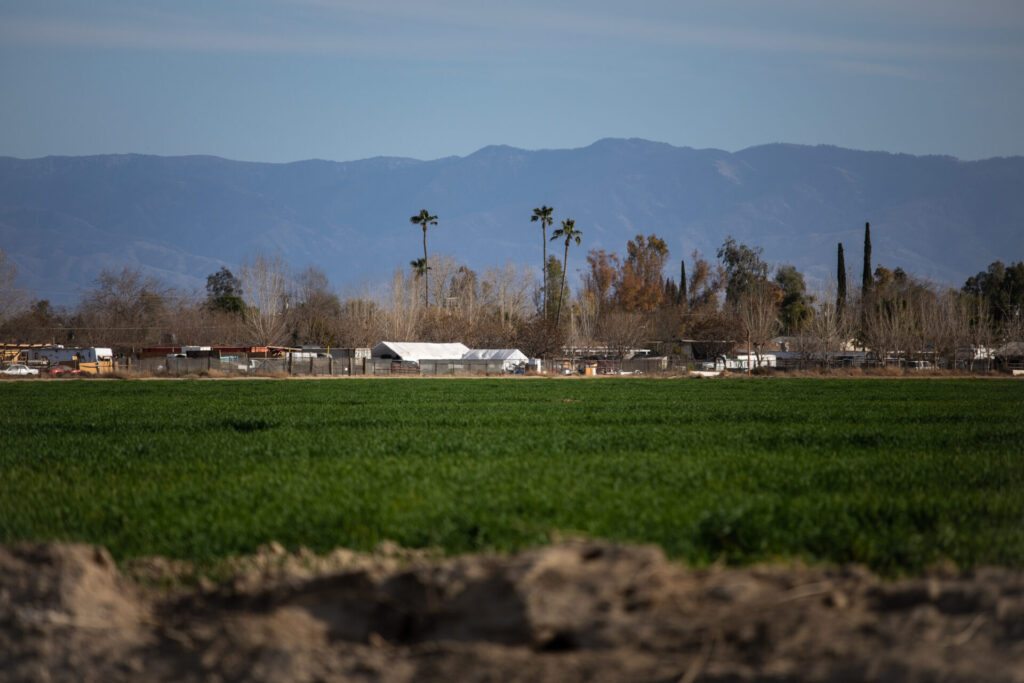Water managers in the San Joaquin Valley who regularly work with residents of poor, rural communities facing water insecurity are applauding last month’s sharply critical audit of the state Water Resources Control Board.
The California State Auditor’s report found a serious lack of urgency on the part of the water board, which is tasked with assisting failing drinking water systems. That lack of urgency, combined with byzantine regulations has led to hundreds of thousands of Californians living without access to clean, abundant water, according to the audit.
The audit was right on, said local water folks.
“It’s 100% true,” said Denise England, grants and resources manager for Tulare County, which has had several communities suffer dry wells and worsening water quality during this drought and the last one.
“It’s a problem and we need to fix it.”
The water board regulates about 7,400 drinking water systems in California. It is the authority primarily responsible for putting federal and state funding into action to improve access to clean water.
But the water board is bogged down in stifling bureaucracy which began years ago, England said. The state’s drinking water program was originally housed under the Department of Public Health. In 2014, it was moved to the water board and renamed as the Division of Drinking Water.
Process over progress
Initially, the water board handled the program well, said England. There was a vast improvement in timing and money flowed for projects efficiently, she said. But over time, the water board changed its processes, England said.
“They have made their processes convenient for themselves and not necessarily convenient for the communities and the people that actually need the money,” said England.
There are more than 370 failing water systems in the state, providing nearly one million people with unsafe drinking water, according to the audit. More than two thirds of those systems are in disadvantaged communities.
The audit supported England’s claims of worsening processes. Over the past five years, the length of time from application to approval and disbursement of funds nearly doubled, from 17 months to 33 months, according to the report.
Some projects take even longer.
Trying to connect
The small, disadvantaged community of Yettem in Tulare County, has been waiting on a new well and a connection to the neighboring town of Seville for five years, said England. Yettem’s water is contaminated with nitrates. The connection to Seville’s water system will solve that problem but a new well is needed to increase supply. And the two communities still need to be physically connected.
The first phase of the project, including engineering and environmental work, is complete. A couple weeks ago the water board cleared the project to move to a funding agreement for construction. That agreement is slated to come by the end of the year.
But in the meantime, aquifer levels in Tulare County are plummeting because of agricultural overpumping of groundwater, fueled by the ongoing drought. Seville is receiving hauled water because its wells are so close to going dry.
England wrote to the water board asking if the process could be expedited so Seville wouldn’t have to continue to rely on hauled water.
“The response was, ‘well, it’s in our process and you’ll get it when you get it,’” said England.
Greater need causes delay
Water board staff have openly rebutted the audit’s claims.
“We respectfully disagree with the report’s framing,” wrote a spokesperson for the water board in a statement. “The report’s central criticism – that funding application processing has slowed and our staff are operating with a lack of urgency for providing needed assistance to communities – fails to take into account that the volume of applications for funding has increased substantially in that time.”
Between 2017-2018 and 2020-2021, the number of applications for funding more than doubled, from 123 to 250, wrote the spokesperson. And the water board now receives five times as many applications as 2014-2015.
The statement cites policy changes which led to a wider variety of projects and increased outreach for the surge in applications.
The audit report acknowledges that changes in state law have contributed to the increase in processing times. But the report says it wasn’t the sole cause.
“Our survey of water systems and observations from our review of a selection of applications indicate that the State Water Board’s cumbersome application process, and its lack of sufficient communication and followup with water systems, are also contributing factors to funding delays,” the audit report summary said.
Highlighting that lack of followup, the audit notes that in 2019 the water board let 10 months elapse before noticing that zero work had been done on a “high priority” project for the South Kern Mutual Water Company, which serves a tiny community just south of Bakersfield. The project had to be reassigned to a new technical assistance provider.
“Cussing and screaming”
“I read the report and I absolutely agree with what it says,” said Scott Taylor, general manager of Lamont Public Utilities District in Kern County.
The community of El Adobe, near Lamont, suffers from unsafe drinking water. Taylor tried for years to get the community hooked up and consolidated with Lamont’s water system. But the water board moved so slowly, Taylor saw little progress over multiple years. After three years of “cussing and screaming” at the board, he’s now seeing improvements in project speed and response.
“I believe they’re trying, but they’re not trying fast enough,” he said.
Only about eight miles to the southeast of Lamont, the small town of Arvin also struggled with unsafe drinking water and years of project delays. Arvin’s wells were contaminated with arsenic, which can occur naturally in groundwater. The state ended up building five new wells two years ago in Arvin which tested compliant for arsenic levels.
Feeling the pain
But it took about five years to complete, said Raul Barraza, Jr., general manager of Arvin Community Services District. Prior to getting any funding, water district staff had to resubmit the same materials three to four times and make multiple visits to the water board in Sacramento. They also lobbied local politicians for help.
“We feel the pain of having to wait,” said Barraza, Jr. “It was a long process. But definitely I think that the state can provide a faster service. Obviously, there needs to be a reassessment of their procedure and their process.”
The audit made many recommendations for the water board to address issues, including eliminating the need for unnecessary application documents, developing a process to fast track urgent water projects and establishing a process for staff to document communications with water systems, among others.
Share this:
- Click to share on Facebook (Opens in new window)
- Click to share on Twitter (Opens in new window)
- Click to share on LinkedIn (Opens in new window)
- Click to share on Reddit (Opens in new window)
- Click to share on Tumblr (Opens in new window)
- Click to share on Pinterest (Opens in new window)
- Click to share on Pocket (Opens in new window)
- Click to share on Telegram (Opens in new window)
- Click to share on WhatsApp (Opens in new window)
- Click to print (Opens in new window)








